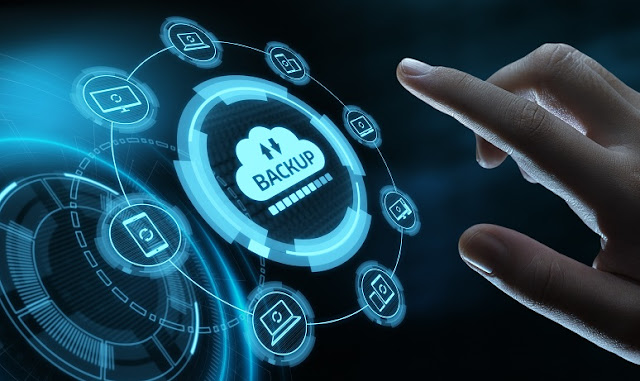Governance, risk management, and compliance (GRC) are majorly concerned with structuring risk management for organizations. Governance and risk management is a structured approach that helps you align IT tasks with corporate goals, mitigate risks efficiently, and stay up to speed with compliance.
Let’s breakdown each concept for better understanding:
Governance
This involves the combination of procedures approved and implemented by the executives to ensure that all organizational tasks, including managing IT operations, are managed and aligned to back up your organization’s business goals.
Risk management
This involves predicting and handling risks or opportunities related to your organization’s activities, which could hold back your organization from conveniently attaining its aims in uncertain situations. In the cybersecurity setting, risk management involves implementing an all-inclusive IT risk management methodology included in your organization’s enterprise risk management function.
Compliance
This involves ensuring that your organizational activities adhere to the mandated laws and regulations that affect the systems. Adhering to compliance means using IT controls and auditing those controls to ensure they are functioning as proposed.
While there are a number of helpful software selections available to help your organization rationalize its governance, risk management, and compliance operations, GRC goes beyond a set of software tools. Several companies consult a framework for direction in growing and improving their governance and risk management operations instead of producing one from scratch.
This is why EC-Council offers a world-class risk management training called The Certified CISO (CCISO) program. This certification program is aimed at transferring the knowledge of seasoned authorities to the next generation in the areas that are most crucial in the expansion and maintenance of an effective information security program.
What is organizational governance and compliance?
Organizational governance and compliance fall under the umbrella term government, risk management, and compliance (GRC). It refers to a framework of rules, policies, and procedures that are applied to control the general direction and performance of an organization.
An innovative corporate governance and compliance program forms the foundation for a healthy organization. If you implement a good governance and risk management program at your organization, both you and your workers will be able to address a number of factors, including process standardization, cost reduction, and a great number of control failures, which are significant when it comes to regulating and supervising enterprise risks.
A good corporate governance and compliance program will include:
- Dependability of financial reporting (including internal and external)
- Appointment and performance of the Directors
- Oversight of the organization’s performance as well as the contribution to corporate success from the Board of Directors in the context of the company’s strategic goals and objectives
- The relationship of the board with the president or Chief Executive Officer
- Communicating and protecting the rights and interests of shareholders and all other stakeholders
- The ethical tone for the organization and the transparency of its conduct
- Board membership, performance, operations, and conduct
- Operational oversight of risk management, corporate compliance, and the integrated framework of internal controls
- Reporting, communication, and information flow between the board and management
- Division of obligation between the board and management
What is the difference between risk management and compliance?
Although risk management and compliance are intricately linked, there are some key differences between them. Differentiating risk management from compliance may not be a critical line of action on your business agenda. However, having this competence can make all the difference between creating tangible value and simply side-stepping risks.
Moreover, both risk management-based and compliance-based activities have distinctive methods and execution strategies, which beg noticing. The difference between risk management and compliance are:
Value Creation Versus Risk Aversion
The most innovative risk management tactics can translate the required problems linked with compliance into a successful value proposition. However, compliance hardly transforms into value-creating business propositions without the long-lens tactic of risk management. Complying with rules and regulations frequently ends at the point where it has been verified that a rule has been obeyed to avoid risks.
Predictive Versus Prescriptive
Risk management is predictive in nature, while compliance has a prescriptive tactic. With risk management, organizations should be able to predict the impact of potential risks on the organization. On the other hand, in terms of compliance, organizations must follow the regulatory boundaries already set in place.
Strategic Versus Tactical
Risk management frameworks should rely deeply on analysis to avoid risks or establish the risks worth taking. However, compliance necessitates ticking all the right boxes to make sure your organization is adhering to all the mandated boundaries (rules and regulations). This is because non-compliance issues can lead to reputational damage, heavy penalties, and expensive fines; it should not be taken lightly.
The Importance of GRC in an Organization
Disjointed GRC can trigger many issues for the organization. However, when GRC is done right, it can be quite beneficial. It can:
- Reduce the costs of addressing risks.
- Eliminate too many negative surprises.
- Help you achieve greater information quality.
- Help your organization achieve greater competence to gather information speedily and effectively.
- Reduce the duplication of activities.
- Help you achieve greater competence to repeat processes reliably.
- Translate into a reduced impact on operations.
How is GRC implemented in security?
Many organizations find it challenging to determine the right framework to implement in the business. However, the key to a successful GRC implementation rests with cybersecurity leadership and cybersecurity management strategies. GRC frameworks will always go wrong, except the leadership causes the changing organization’s culture to support GRC activities constantly.
Your portfolio management, regulatory compliance functions, risk management, and decision-making processes, which are covered in a GRC framework, will all go wrong and be unsuccessful without the cybersecurity leadership and high-level executives supporting cultural change. The following steps will help you integrate the right GRC into your business practices.
Step 1: Determine what GRC means to your organization
To implement any successful strategy, you must first determine the purpose of such a framework. This would determine if it is the right strategy to use or not. Consider your major stakeholders and employees to understand how GRC could affect their functions. Most importantly, establish a common GRC lexicon among these groups to reduce confusion, since compliance and regulatory priorities would be appraised.
Step 2: Conduct a review of the existing regulatory landscape
Survey your organization’s current state of business maturity functions. This will aid you in aligning the stakeholders across the GRC functionalities. By conducting a review, the CCISO would be able to expose disproportionate investments in certain requirements and obtain a clearer view of the current investments in regulatory compliance and determine areas of potential additional investments or cost savings.
Step 3: Develop an efficient communication strategy
Communication is key to any business strategy. Communicating the benefits of the GRC frameworks to stakeholders and end-users will give them enough time to prepare and adjust to the impending change. Effective communications will open up channels for innovative ideas and make the framework more operational.
Step 4: Define what success means to your organization
Determine how success will be measured to demonstrate that the GRC framework has been efficient and beneficial for your organization. Whether your target is a financial or policy target, it is important to choose the most relevant benefits. This will demonstrate to your end-users how the GRC framework is improving organizational functions.
Furthermore, you must realize that this is an ongoing process and constantly upgrading your strategies will improve your organization’s performance. You may have to rethink your cybersecurity leadership and cybersecurity management efforts because risks are everywhere.
Likewise, the Chief Information Security Officer (CISO), alongside cyber leaders, must be able to entrench security throughout the organization’s operations, speedily respond to threats, and impact other senior leaders.
Get Trained in GRC
Almost every job role requires one form of GRC Certification or the other, including CIO, CISO, Security engineers, IT professionals, Security analyst, information assurance program manager, cyber threat information analysts, among several others.
Since GRC can be implemented by any organization regardless of their size, which wants to align their business goals with their IT infrastructure while ensuring compliance risk management, risk management certifications, and GRC training are important. The best certification any security offer can have in this area is the CCISO certification.
Source: eccouncil.org

















